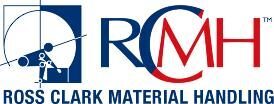
The Role of Pallet Racking in Lean Manufacturing
Efficiency and optimization are the backbone of successful manufacturing and warehousing operations.
It is where the principles of Lean Manufacturing come into play, focusing on minimizing waste and maximizing productivity.
An often-overlooked hero is at the heart of achieving these lean principles in a warehouse setting: pallet racking.
Ross Clark Material Handling is at the forefront of integrating pallet racking systems into Lean Manufacturing strategies, ensuring your warehouse operations are as efficient as possible.
What is Lean Manufacturing
Before diving into the specifics of pallet racking, it’s essential to understand what Lean Manufacturing is all about.
Originating from the Toyota Production System, Lean Manufacturing is a systematic method for waste minimization within a manufacturing system without sacrificing productivity.
It emphasizes identifying and eliminating non-value-added activities (waste) to improve quality, reduce production time, and decrease costs.
The Vital Role of Pallet Racking
Pallet racking plays a pivotal role in Lean Manufacturing. It provides an efficient storage solution that aligns with the lean principles.
The principles include defining value from the customer’s standpoint, mapping the value stream, creating flow, establishing pull, and pursuing perfection.
Here’s how pallet racking contributes to each of these principles:
1) Defining Value and Mapping the Value Stream
Effective pallet racking systems enable warehouses to store products in a manner that reflects the customer’s actual value.
By organizing and optimizing space, pallet racking ensures that the most essential, high-demand items are accessible, supporting a value stream focused on delivering the highest value to the customer.
2) Creating Flow
By reducing the effort required to store and retrieve goods, pallet racking systems facilitate a smoother flow of materials through the manufacturing process.
This uninterrupted flow is crucial for minimizing delays and eliminating bottlenecks, making the process lean and efficient.
3) Establishing Pull
Pallet racking supports the pull-based approach of Lean Manufacturing. Products are only produced and supplied as needed, reducing overproduction and excess inventory.
With well-designed pallet racking, warehouses can quickly adapt to changing demand, ensuring that the right amount of product is available at the right time.
4) Pursuing Perfection
Lean Manufacturing is an ongoing journey toward perfection, and pallet-racking systems play a significant role in this continuous improvement process.
Pallet racking systems help identify areas for improvement and facilitate the implementation of changes to enhance overall operational efficiency. They do it by enabling better organization, increased efficiency, and flexibility,
Efficient Storage and Warehouse Optimization
Pallet racking systems are the cornerstone of efficient storage and warehouse optimization.
They maximize the use of vertical space, reduce clutter, and ensure that inventory is organized and easily accessible.
It not only improves the efficiency of warehouse operations but also significantly reduces the risk of damage to goods and injuries to staff.
Tailored Solutions for Every Need
Ross Clark Material Handling understands that each warehouse has unique needs. That’s why we offer customized pallet racking solutions designed to meet the specific requirements of your operations.
Whether you need selective racks for high selectivity, drive-in racks for high-density storage, or cantilever racks for long items, we have the expertise. We can design a system that maximizes your warehouse’s efficiency and productivity.
Embracing Technology for Enhanced Efficiency
In addition to traditional pallet racking systems, Ross Clark Material Handling is at the forefront of integrating cutting-edge technologies to enhance warehouse efficiency further.
From warehouse management systems (WMS) that automate inventory control to advanced material handling equipment that speeds up the loading and unloading process, we leverage technology. We make your operations leaner and more competitive.
Sustainability and Lean Manufacturing
Incorporating pallet racking into your Lean Manufacturing strategy boosts efficiency and promotes sustainability.
By optimizing storage space and reducing the need for additional warehousing, pallet racking systems help lower your carbon footprint.
Moreover, the durability and adaptability of these systems ensure they can be reused and reconfigured to meet changing needs, further contributing to sustainable operations.
The Bottom Line
Integrating pallet racking systems into Lean Manufacturing processes is more than just a strategy for warehouse optimization.
It’s a transformative approach that drives efficiency, reduces waste, and enhances competitiveness.
As businesses continue to seek ways to streamline operations and maximize value, the role of pallet racking in supporting these goals becomes increasingly significant.
By harnessing the power of pallet racking in Lean Manufacturing, businesses can achieve remarkable efficiency, productivity, and sustainability improvements.
Ross Clark Material Handling is your partner in this journey, providing the expertise and solutions you need to excel in today’s competitive landscape.
